Content Marketing Vs Inbound Marketing: The Differences and Similarities Every Marketer Needs to Know
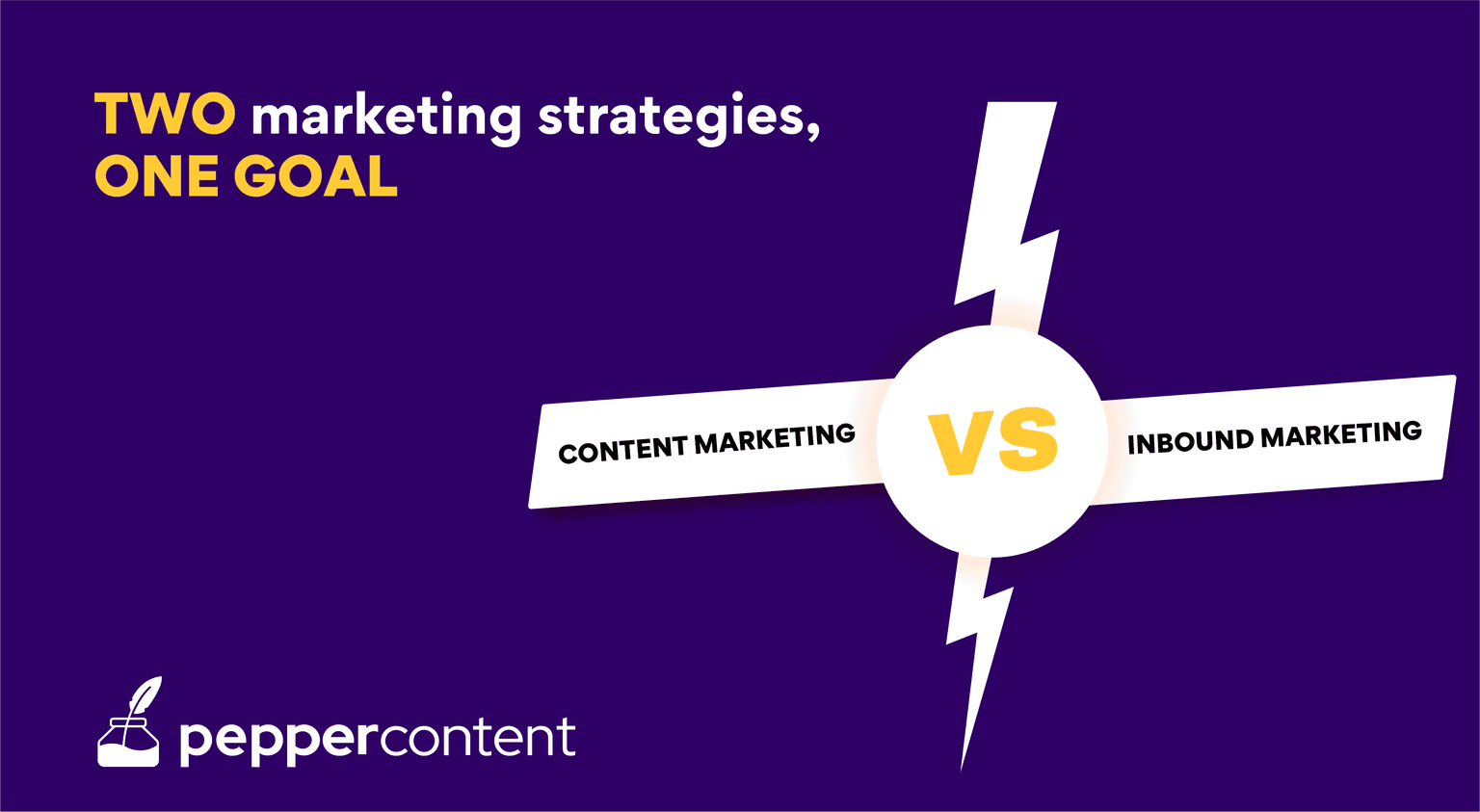
Table of Contents
- What is Content Marketing?
- What is Inbound Marketing?
- Is One Better than the Other?
- How Can Inbound Marketing & Content Marketing Be Used Online?
- How Both Strategies Work in Tandem to Bring You Leads
- Inbound Marketing vs Content Marketing – A Successful Strategy for Growth
- Key Takeaways
- Conclusion
- FAQs
A lot of us confuse content marketing and inbound marketing as the same thing. We may use these terms interchangeably and miss the difference between these strategies. In this blog, we’ll try to highlight the differences and similarities between content marketing vs inbound marketing to give a sense of clarity that will ensure that all our marketing strategies are being effectively implemented.
What is Content Marketing?

Content marketing, as a term, was initially created in 2001. It was coined to elucidate the manner in which brands utilized content enhanced by them to market to clients. In place of conventional strategies such as print advertising, ad commercials, or billboards, content marketing depended on blogs, magazines, and books to formally present customers to firms and companies.
Though this term is comparatively new and has come to general focus in the last few years, content marketing has been in existence for more than a hundred years. An early example goes back to 1895 when US-based agricultural equipment manufacturer John Deere started the distribution of a magazine called ‘The Furrow’ to its customers. Sometime later, in 1904, Jell-O sent out a free recipe book to its customers. It led to more than a million dollars in revenue sales.
Thus, content marketing, as opposed to traditional marketing, is the practice of using content in various forms like (currently) blogs, ebooks, whitepapers, videos, and podcasts, to attract or acquire customers, engage them and convert them. It is a marketing strategy based on leveraging content and various content distribution platforms like social media, emailers, and digital media sites to name a few.
Content created by brands is often aimed at educating people about the problems the brand, its product or solutions solve versus talking about the brand itself. Content marketing shifts focus from selling a product to solving a real problem.
What is Inbound Marketing?
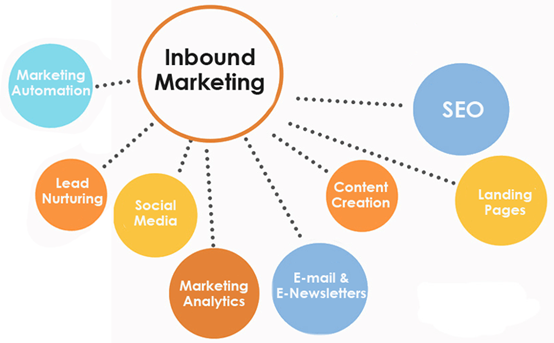
Inbound marketing, similar to content marketing, has been present for several years but has only surfaced as the chosen marketing method in the last five to ten years. As customers gain an understanding of ignoring invasive sales information, brands have had to find new methods to get to potential clients and turn them into buyers.
The accepted belief in inbound marketing is that customers show little interest in being interrupted with marketing while doing another activity. But when they actively seek a service or company on their own, they are more likely to accept a mindful offer or react to a call to action.
Inbound marketing is a business methodology that uses highly relevant and targeted content to attract and convert an audience. As opposed to outbound marketing, like cold calling, which essentially means reaching out to prospects proactively, inbound marketing focuses on bringing customers to you.
So, while content marketing connects the audience to the brand, inbound marketing gives structure to all steps in the prospect’s buying process. From techniques to content creation, ads, SEO, conversion of lead, the buying process is a part of inbound marketing. To be precise, this model enhances the buying process and helps in business development for the organization. This, essentially, is the inbound marketing content marketing difference.
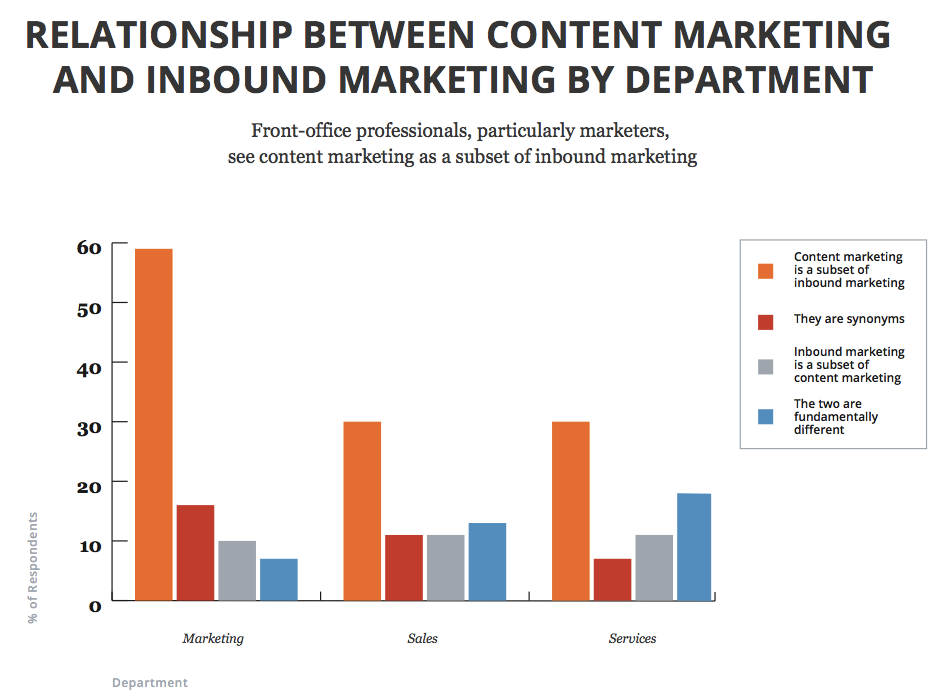
To take full advantage of inbound marketing, you need to set some frameworks like having automation identify the right lead for sales. It also helps to get the correct data for your sales team, which they can use to contact potential clients and convert them to buyers.
Content marketing analytics gives information on each metric and helps understand how potential clients can be drawn to your business. Inbound marketing strategy is focused on offering the appropriate content to the right customer at a suitable time.
A lot of inbound strategies include targeting and supporting certain actions. For example, a program of inbound marketing may involve showcasing a pop-up to a repeat visitor, as they are more likely to become a subscriber to an email list than a person who is a first-time website visitor.
Several methods are used which show the importance of inbound marketing, such as guides, blogging, videos, and whitepapers. In place of spontaneously marketing for views and clicks, inbound is focused on making the appropriate content accessible for anybody who makes a decision to need or want it.
In inbound marketing, a more holistic strategy is involved. It is a complex method when compared to outbound marketing which requires sustained work to support your website, concurrent usage of digital channels, developing productive content, and the implementation of tools for measurement.
A lot of digital marketers do not understand the finer nuances. They follow the approach they are most comfortable with – the linear or outbound method used in the digital zone. This approach will get you the conventional results.
For a successful inbound marketing campaign, your website requires a solid foundation, a content marketing strategy, carrying out able messaging, call-to-action strategy, blog, distribution hub, responsive design, macro, and micro conversion chances, and user-friendly CMS or content management system.
When your website is in great form, the creation of content and distribution can start. The content must be engaging and fulfill the goals of the keyword strategy.
The similarities
Inbound marketing uses three key strategies to help drive customers. These are as follows:
- Attract: Bringing in people with the right content and information will make your audience trust your opinion.
- Engage: Learn to involve your audience with interesting facts and stories.
- Delight: Provide support to your audience so they get more interested and are more likely to buy your product.
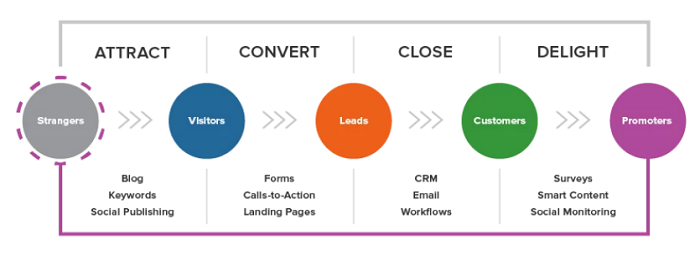
Content marketing and inbound marketing both make an encounter that is useful and applicable to those on the less than desirable end. They’re both centered around a whole excursion that is not interruptive but instead meets the potential buyer precisely where they are and empowers them to select into future interchanges, sustaining them on their way.
Both the methods adopt a slow and steady strategy to obtain clients. However, the trust Content marketing and inbound marketing fabricate encourages and engages users well.
If you have read adequately about content vs inbound marketing, you will know about the belief conveyed that content marketing and inbound marketing are the same things, and those using both terms are making unimportant objections or criticisms. There is some extent of truth to this, but there are also some major differences between both.
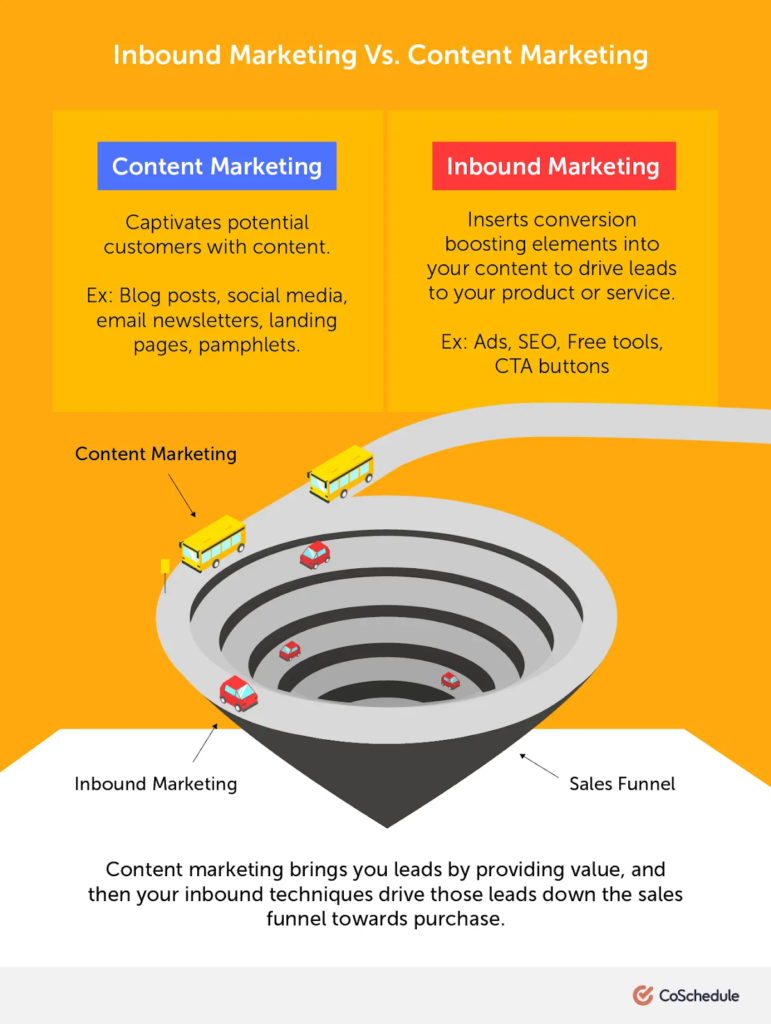
Content marketing and inbound marketing strategies are similar as both consist of a holistic perception of marketing that focuses on fulfilling the visitor or client’s requirements. Both are not interruptive, and both depend on the gradual, uniform relationship-building between the client and brand to go ahead with a sale.
But content marketing and inbound marketing are not the same as the related activities are different. It would not be false to believe that content marketing is an essential part of an inbound marketing strategy. Inbound marketing cites the methods which are adopted to convert a visitor to a customer when they have landed on a website. Content marketing is only a part of that, as it focuses on specific strategies of content distribution and creation.
While both of them are non-interruptive, present-day marketing methods, they are just not the same thing. The end goal may be the same but the methods involved are entirely different.
The differences
Content marketing involves a fundamental approach zeroed in on making and disseminating significant, applicable, and steady content to draw in and hold a niche crowd — and, eventually, to drive productive client activity. Content marketing has three key benefits:
- Increase sales
- Save costs
- Build loyal customers
This type of marketing is not possible without excellent and relevant content. It is different from inbound marketing in the following ways:
- Content marketing is carried out using the right content, which could be videos or text to draw in your audience.
- Inbound marketing is used to engage an already established audience. Engaging the audience helps push them towards the first purchase and many more after that.
Some schools of thought believe that while inbound marketing ends at bringing in the prospect and making the sale, content marketing goes much beyond it, as marketers are always required to create new and exciting pieces of content to retain, engage and upsell to existing customers. Hence, content marketing becomes a much bigger entity in which inbound marketing exists.
Though inbound marketing and content marketing have many aspects in common, there is a considerable difference between content marketing and inbound marketing. There is more to know about content marketing vs inbound marketing. Content marketing is focused on the distribution and creation of content across many channels – for example, a written guide, which is shared on social media and making sure that it is read and shared by people who find it relevant.
On the other hand, inbound marketing is focused on creating a website, the associated content, compelling enough to attract action by the visitor – be it a purchase, form completion, or just a social media following.
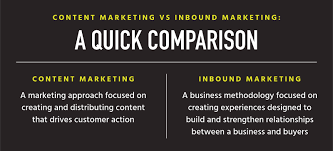
Content marketing is mainly focused on fostering relationships via content, inbound marketing is a vast zone activity that uses a range of methods and activities to inspire customers to take some action. The majority of content marketing programs give priority to content creation and blogging while inbound marketing comprises a greater variety of methods, like blogs, social media, and videos.
Is One Better than the Other?
Both content marketing and inbound marketing should, in the ideal scenario, be inclusive in your online marketing strategy. One method is not better than the other, and both the methods when combined together can lead to some great results.
Inbound marketing is imperative as it will make the website awesome. The methods and the content can drive visitors to take necessary action and convert them into customers. On the other hand, content marketing will make your website interesting to visitors. It will furnish them with useful material which assures them you are the right partner – and can also enhance search engine rankings.
Combined, content marketing and inbound marketing can make your website truly remarkable. With these methods, you can:
- Enhance your presence
- Generate leads
- Build good relationships with customers
- Get content shared repeatedly
- Ensure that your brand will be successful online

How Can Inbound Marketing and Content Marketing Be Used Online?
The main criteria of an inbound marketing program should be placing the correct information in the right location on your website. This means making answers to general questions accessible, including images, videos, or content that enhances value, blogging, and indulging in any other activity which will convert customers.
Content marketing programs should focus their attention on creating compelling, useful, and unique content, and the distribution across several channels. Your marketing strategy should consist of writing guides or blog posts, sharing them on social media, link-building to them, and further on. These activities will boost brand value and support the initiation of relationships with prospective customers. This is one of the main inbound marketing content marketing differences.
How Both the Strategies Work in Tandem to Bring You Leads?
Inbound marketing operates on the thought that today’s customer dismisses impersonal, disruptive messages. It motivates customers to be up to the task and seek information and results which are best-suited to solve their problems.
Content marketing is a huge component of that inbound marketing strategy, especially in the initial stages of the buyer’s journey.
The sales team may already have a fantastic, inbound-centric method of turning leads to sales; content marketing is one of the prime tools which brings the leads to marketing and sales teams right at the start. It is a tool that assists the inbound marketing funnel.
For example, the below advertisement by Canva is the perfect embodiment of content marketing:
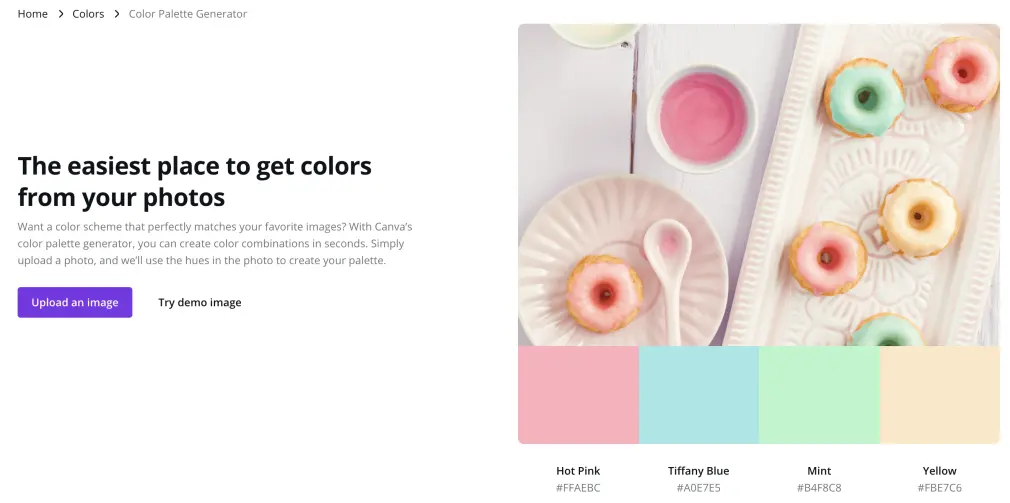
While below is an example of inbound marketing. This email by Uber is sent at the correct time to the correct customers to incite a certain specific response.
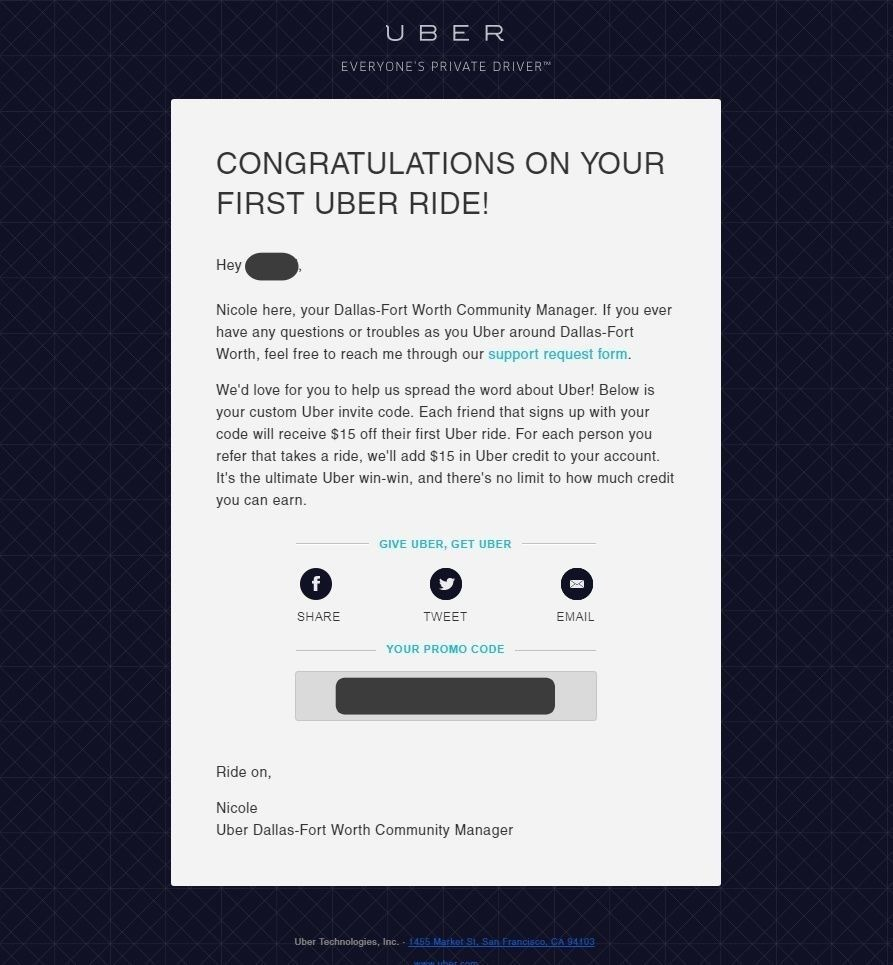
Content Marketing Vs Inbound Marketing: A Successful Strategy for Growth
It is ideal to think of content marketing and inbound marketing as a combination, instead of content marketing vs inbound marketing. Both strategies are useful processes to bring in and close beneficial leads and they work well when used in synchronicity.
No marketer should see inbound marketing and content marketing as two different strategies. They should instead be seen as two strategies that go well together. If they are used together effectively, you will see considerable growth in sales and ROI.
Along with these strategies, every company should also focus on content marketing scope for these strategies to work effectively. Techniques like web design, SEO, and lead management should be optimized to work well with content marketing and inbound marketing strategies.

Conclusion
While content marketing and inbound marketing are quite different, your company should not focus on these differences but figure out what these two strategies can do for your business.
While content marketing is the buzzword today, many crucial tasks that go beyond the scope of content marketing like technical SEO, web design, and lead management, all elements of inbound marketing, can help your business succeed in the digital world.
Once you find a way to work well both these strategies, increasing sales and revenue will become a cakewalk.
Key Takeaways
- Content marketing, unlike traditional marketing, is a marketing strategy that leverages content in various forms like blogs, ebooks, whitepapers, videos, and podcasts, to attract customers and convert them.
- Inbound marketing is a blanket term used to attract and convert an audience by using highly relevant and targeted content.
- Both of them sound the same, don’t they? They actually might be! But, the basic difference lies in the fact that content marketing is a part of the blanket term inbound marketing which as opposed to outbound marketing, focuses on bringing customers to you.
- However, many experts believe that it could also be the other way round since content marketing is an ongoing creative process that warrants the need for exciting content to attract audiences and inbound marketing is all about specific steps to convert a lead into a customer. Thus, content marketing is apparently going to be around for long.
FAQs
In inbound marketing, the strategy is integrated and cross-channel. In outbound marketing, linear strategies are involved with restricted marketing resources. In inbound marketing, the distribution is consistent and repetitive. In outbound marketing, it is varied and not continuous.
The first is to communicate through mediums in which the audience has permitted you to communicate.
Secondly, to answer questions people have asked and escalate those answers online in expectation of the question.
Both the premises are permission-based.
In outbound marketing, the message is obscure and duplicated. With limited room to work with, whether it is a newspaper advertisement or a few seconds on the radio, the aim of outbound marketing has been to stand apart. If you know where the ad will be shown, you can attempt to force the message to suit the audience. This does not have a high success ratio.
In inbound marketing, the message is useful and specific. It is not forced on you and the message is presented well in an attractive manner, ready to be consumed when it is convenient. This message has quality content that engages and educates the visitor. It is designed to answer a customer’s question and to fill empty blanks.
Inbound marketing gives permission for reporting which is a closed-loop which means that it allows us to track a person’s IP address from the moment it hits the website. It also informs how the IP address got there and the percentage of time spent on the website.
Latest Blogs
Explore how Google’s 2025 AI search updates triggered ranking chaos. Learn actionable strategies to adapt your SEO for AI Overviews, zero-click searches, and SERP volatility. Stay ahead now.
Learn how to rank on AI search engines like ChatGPT, Perplexity, and Gemini by optimizing your content for authority, structure, and relevance. Stay ahead in AI-driven search with this strategic guide.
Explore the best healthcare SEO services for your medical practice. Improve online visibility and effectively reach more patients in need of your services.
Get your hands on the latest news!
Similar Posts

Content Marketing
4 mins read
11 Best B2B Content Marketing Agencies for B2B Companies in 2024

Content Marketing
5 mins read
Top ecommerce Marketing Agencies with Proven Strategies for 2024

Content Marketing
5 mins read